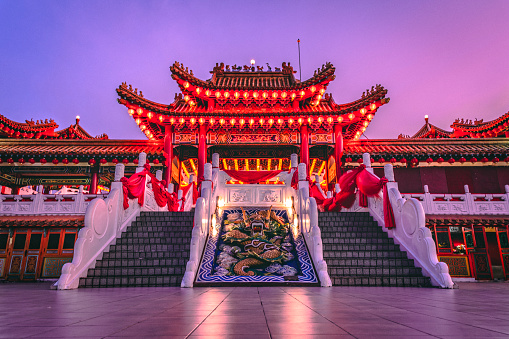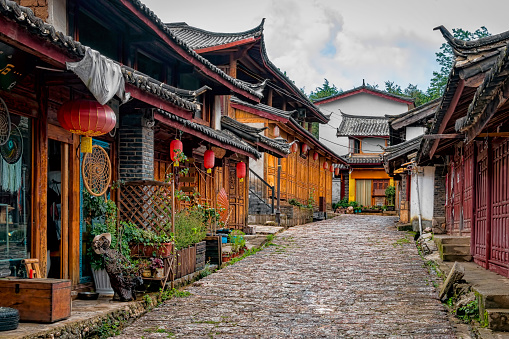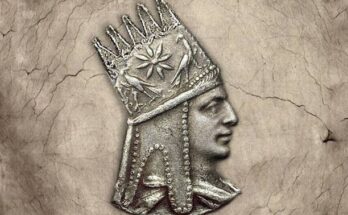List of the most prosperous dynasties in China
Beijing, the Chinese capital, hosted the 2008 Summer Olympics. Although though China has lately been in the news and people are aware of some current events there. Few are aware that China has a long and difficult history filled with shifting and prosperous dynasties. This article subject exposes readers to the prosperous dynasties that mark the first 2800 years of Chinese culture in honour of the 2008 Beijing Olympics. These prosperous dynasties plays huge role in the world history as well.
Shang Dynasty: Prosperous China

IMAGE CREDITS: istockphoto.com
One of the earliest real dynasties is regarded as the Shang Dynasty, which was concentrated in Northern China and did not extend across most of modern-day China. It had a significant cultural impact on the region, leaves behind written records that offer a glimpse into their vision of the world, and is supported by archaeological findings. The Shang Dynasty was characterized by city-states with substantial palaces, temples, and altars that were encircled by residential neighborhoods and an industrial sector. Kings who governed the Dynasty were significant for two main reasons: their superior military might and for religious reasons.
The king served as a priest in the Shang religion in order to honor the supreme god Di and the regal ancestors. It was believed that Di could best speak with the royal ancestors, and that the monarch could do the same with them. Writing was initially introduced into Chinese culture during the Shang Dynasty. Initially pictographic in nature, the writing gradually evolved into a more sophisticated ideographic script. Due to being written on strips of bamboo, the majority of the Shang Dynasty writing samples have been lost. On bronze objects and oracle bones, some of the writing from that time period has survived, though.
The Zhou Dynasty
The Shang were vanquished by the Zhou in 1050, greatly expanding Chinese territory. The Zhou described their successful conquest as a triumph of righteous and honorable warriors over the morally corrupt king and courtiers of the Shang. The Zhou Dynasty maintained the city-state system of government. However, unlike the Shang monarchs, the Zhou rulers sent out trusted family members or subordinates with troops to build walled garrisons in the areas rather than attempting to dominate all of them. Local chiefs were chosen to act as the emperor’s envoy if the emperor could not send a reliable agent they knew. Many of the significant philosophical concepts and thinkers who would define China throughout the centuries emerged during the Zhou Dynasty.
Confucianism, which he developed in the fifth and fourth century BC, gave moral guidelines for Chinese society by emphasizing filial piety within the family and community as well as the family as a microcosm of society. The government might help the populace by serving as a sort of “figurehead” to its family or community, according to Confucianism. Confucius’s students, particularly Mencius, developed and disseminated his ideas on family and society, which had a significant impact on China for approximately 2,000 years. Daoism and Legalism, the other two significant ideologies created during the Zhou Dynasty.
The Han Dynasty

IMAGE CREDITS: istockphoto.com
The Han Dynasty is distinguished by military conquests, the growth of the Silk Road, and appointments to government positions based on ability rather than birth. Those who had been taught in Confucianism and the application of Confucian ideas became crucial elements of the government during the Han Dynasty.
the Sui Dynasty: Prosperous China
China experienced 400 years of political split following the Han Dynasty. During which no one party was able to establish firm control over all of the country’s regions. And later the Tang Dynasty. A new code of law that blended the legal cultures of the North. Civil service exams were first implemented during the Sui Dynasty to develop a sizable administrative workforce. In order to make sure that the men nominated to civil service jobs were knowledgeable about Confucian philosophy, the exams emphasized the Confucian classics.
The system permitted many gifted men from unrelated families to climb in the political ranks while many of the aristocratic families retained their political influence by inculcating the Confucian classics in their offspring. Buddhism started to ingrain itself into Chinese culture during the Tang Dynasty. Buddhist monks offered housing for travelers, schools for young children, and gathering spaces for social events. By establishing businesses like mills and oil presses, the monasteries also emerged as major economic forces. They were subsequently able to create money-lending and pawn-broking businesses thanks to these financial resources. Buddhism also contributed cultural value through the stories and artwork that the monks produced.
the Tang Dynasty

IMAGE CREDITS: istockphoto.com
Centralized political and military power began to fall apart around the end of the Tang Dynasty. After that, in 960, a general by the name of Taizu, Zhao Kuangyin, was able to restore peace in China. To ensure that China would remain under his authority, he hired temporary civil officials to lead the military. And replaced the military governors with them. The Song Dynasty, also known as the Sung Dynasty. Which was unable to increase its political. And military sway outside of the boundaries of China, unlike some of the prior dynasties.
The Jurchens from the north invaded, occupied the capital, and eventually the entire northern section of the Song kingdom. Despite all of the military advancements, the Song were unable to repel them. Up until the late 13th century, the Southern Song Dynasty was able to retain political stability. The spread of rice cultivation contributed to the economic growth of the Song Dynasty. The enormous population growth and agricultural prosperity that rice farming contributed to made it possible for the economy. And commercialization to expand.
This list explores the most prosperous dynasties that have played pivotal roles in China’s cultural, economic, and political development over the centuries.





One Comment on “List of the most prosperous dynasties in China”